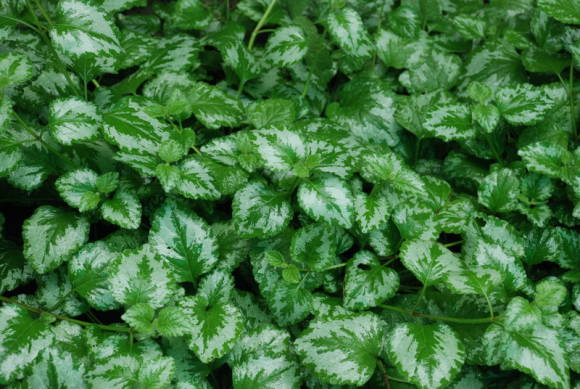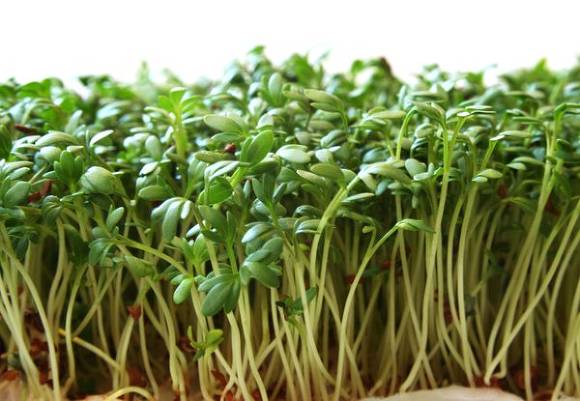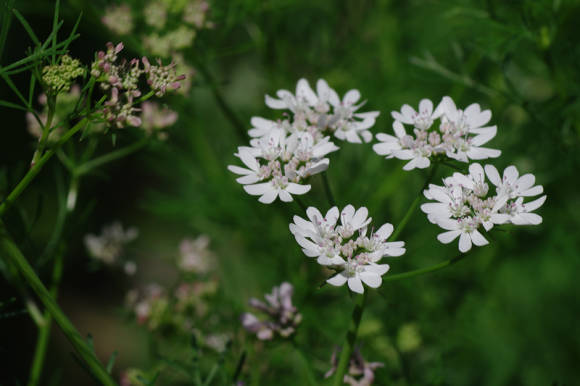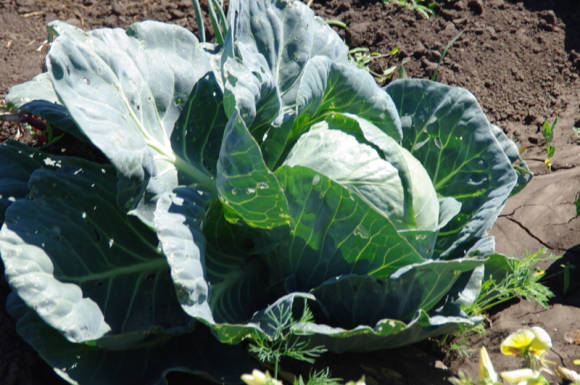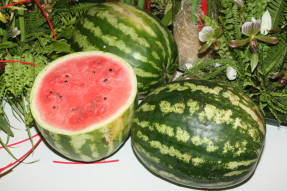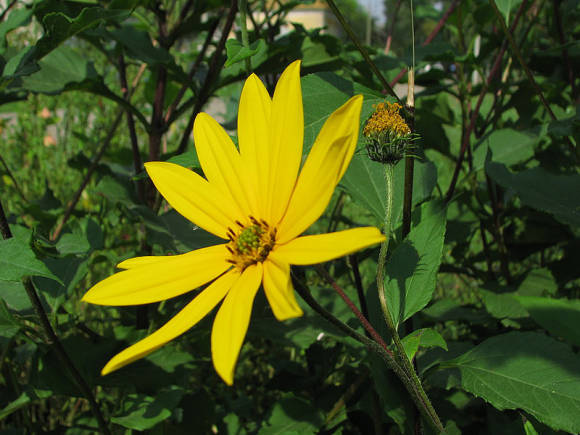
Walking through our gardening partnership in late autumn, I notice that the sea buckthorn trees are all golden from unpicked berries. The leaves have already flown around, and the gardeners have not yet reaped the harvest.
The birds are fed up with other berries this year, but there will come a time when a flock will come overnight and will not leave a single berry. Of course, they need to be fed, and I never pick every last berry. Birds feast on sea buckthorn in a very interesting way: they do not eat the pulp, but only peck at the seed. Perhaps that is why sometimes you can find sea buckthorn growing on the side of the road. So, my neighbors at the dacha once discovered a sea buckthorn plant over a ditch next to their site, transferred it to their garden and for several years now they have been harvesting this very useful golden berry.
The healing properties of sea buckthorn
 |
Variety "Giant" |
The fact that our gardens burn with the orange flame of unharvested sea buckthorn berries in late autumn, speaks of the ignorance of many gardeners about the amazingly useful medicinal properties of this plant.
"Sea buckthorn is a recognized champion among plants in vitamins and other vital substances" (from the book by Alexander Eidelnant "Sea buckthorn in medicine, cosmetology, cooking").
When someone claims that a certain plant helps with many diseases, this immediately causes distrust. But once you understand the mechanism of the effect of sea buckthorn on the body, everything falls into place.
Unfortunately, doctors often treat not the cause of the disease, but its effect. The cause of many diseases lies in the weakening of the immune system. Immunity is strong - and the body itself fights viruses and infections; weakened immunity - diseases are right there.
This amazing berry contains vitamin E, rare for plants - “vitamin of life”, as it is also called. A complex of natural, not artificial, vitamins allows you to treat diseases of the gastrointestinal tract, ear, throat, nose; burns and many, many other diseases.
Growing features
 Sea buckthorn is very seriously dealt with in China. Seeds are scattered along river banks, where they germinate in favorable conditions. The berries are harvested and processed industrially. Sea buckthorn oil, made in China, is known in many countries around the world.
Sea buckthorn is very seriously dealt with in China. Seeds are scattered along river banks, where they germinate in favorable conditions. The berries are harvested and processed industrially. Sea buckthorn oil, made in China, is known in many countries around the world.
We have sea buckthorn growing in the wild in Siberia. In the forests of the Leningrad region, I did not meet her, but my acquaintances told me that in Vyritsa, on the river bank, sea buckthorn bushes grow.
I often ask gardeners: "Why don't you pick sea buckthorn?" In response I hear: "Thorny!". And in our plots, the first two sea buckthorns were prickly. I remember that in the fall all my hands were covered with thorn wounds. And my mother had a friend, a kind-hearted person. And then one day in the spring, my mother brought us from her a bunch of sea buckthorn shoots without thorns. Of course, we all planted them. Since then, collecting sea buckthorn has been a pleasure for me. Without using any special collection devices, I, having gained patience, collect a pot that can hold 2.5 kilograms of berries almost every day, and it takes me about four hours to do this.
Sea buckthorn grows quickly when planted in a favorable soil. In the third or fourth year, it gives the first harvest, and in the fifth or sixth year, you can already collect 9-12 kg from each tree.
Sea buckthorn can grow both as a tree and as a bush. The height of the trees reaches five to six meters. It is not safe to pick berries at such a height, therefore, at the end of September - in the first half of October, you can shorten the crown of tall trees by cutting off the upper branches with berries. Yes, and it is cold in the second half of autumn to pick berries, and we pick them from cut branches in a cozy atmosphere: the stove is heated, freshly brewed tea from the leaves of sea buckthorn, black currant, cherry or strawberry smells ...
You can surprise guests with a cocktail of diluted concentrated sea buckthorn juice with pieces of fruit: tangerines, apples, pears, etc.Serve the cocktail in tall glasses and with a straw.
Tall sea buckthorn can be transformed into a bush form as early as one year old. To do this, cut the one-year-old seedling in early spring, leaving 4 buds at the bottom. The next year, repeat the operation, but with each of the four grown shoots. In the future, follow the growth, reducing the height of the crown in September-October.
Now let's deal with male and female plants. Often my gardeners complain that they have a sea buckthorn plant, but there are no berries - or there are only a few of them on the tree. If there are no berries at all, then most likely you have a male specimen.
If, nevertheless, berries appear here and there, you have a female plant, but there is no male plant nearby, and pollination does not occur. For every five to six female plants, one male should be planted. But if a male plant grows nearby, near your neighbors, then you can do only female plants on your site.
How can you tell if a plant is male or female? If the sea buckthorn is only a year old, then it is difficult to do this, but already at the age of three or four years old it can be recognized by the kidneys.
Look at a branch of a female plant: its bud consists of two or three scales. On the branches of a male plant, the buds are often located and entirely consist of many scales. After all, pollen from one male plant pollinates five or six female specimens, and even how pollinates - such powerful cobs of berries are formed in the fall that you are surprised at the wisdom of nature!
 |  |
Buds of a female plant | Male plant buds |
Sea buckthorn roots go far beyond the crown, sometimes 8–10 m from the trunk. They are cordlike, in a cork sheath, and can withstand temperatures down to -22C. The presence of superficial and far-reaching roots requires periodic bedding (mulching), as well as the introduction of fertilizers (preferably organic) in places far from the crown.
There is an opinion that sea buckthorn is an unpretentious plant, and it can be grown even on sandy soils. This is not entirely true. To plant sea buckthorn, you need to prepare good soil, moisture and air permeable. Presence of humus earth, peat, and sand is desirable.
We keep the land under the sea buckthorn in a tinned form, that is, it is not a field and is not loose, periodically mowing the grass and leaving it. We apply organic fertilizers superficially, leveling them over the entire area where sea buckthorn roots may be. Gives out the location of the roots of the shoots, which can often be found even among neighbors on the site. Do not quarrel with your neighbors, do not demand back "your" seedlings, but rather tell them about the benefits of sea buckthorn and its medicinal properties.
It is very important to plant the sea buckthorn on time. In our region, it does not take root in the fall. I heard about this before, but I really wanted to plant the Chuiskaya sea buckthorn variety, especially since at the Agrorus exhibition, which takes place in St. Petersburg in August, when selling seedlings, they always show such cobs of large bright orange berries that it is difficult to resist before wanting to buy a seedling. I bought it twice. Planted in September, but the seedlings did not survive until spring.
I also wrote sea buckthorn from Chelyabinsk. But from there, the seedlings come in late autumn, in late September - early October. I decided to dig them in - and dug in according to all the rules. But ... the seedlings did not survive until spring.
But the spring planting is successful, although there is also one "but" here. In spring, sea buckthorn seedlings with an open root system should be planted early, until the buds have blossomed, and they bloom earlier than all other fruit plants. At this time, the horticultural markets are also closed. So the best way to plant sea buckthorn is still with seedlings with a closed root system: plant it even in spring, even in summer, even in autumn - the survival rate is one hundred percent.
Sea buckthorn is considered a very hardy crop. But not all varieties. For twenty years now, one variety has been freezing almost every year. The foliage is large, the berries are rare, but also very large. After freezing, a bush formed instead of a tree, but its shoots freeze every year.Therefore, when purchasing a sea buckthorn seedling, take an interest in the variety and its frost resistance in our region.
Choosing a variety
 |
Variety "Dar MGU" |
Now I will describe some varieties suitable for frost resistance for growing in the Leningrad region.
- "Giant" - fruits are large, weighing 8-9 g, cylindrical, light orange. I start collecting them in the first decade of September. The peduncle is long, the separation is dry. A variety without thorns. I am very happy with it. It grows as a tall tree, requires shortening the crown.
- "Gift of Moscow State University" - a spreading bush up to three meters, without thorns. Fruits are large, orange, on a long stalk, dry separation. The taste differs from the "Giant" variety - a little sweeter. We got fruit in the third year. I didn’t collect them, I wanted to eat everything from the bush. But the birds got ahead of me.
I give the characteristics of the other varieties from the literature, I carefully selected the best ones, I want to buy some of them myself.
- "Elizabeth" - the variety is named in honor of the breeder of the Research Institute of Horticulture of Siberia E.I. Panteleeva. I was interested in it for the following indicators: bush form, large orange berries, recommended for the West Siberian region.
- Chuiskaya - my unfulfilled dream: there are not many thorns, the fruits are oval-cylindrical, orange, sweet-sour (note: it is sweet-sour, not sweet-sour, as is usually written in the characteristics), fruit weight - 9 g, ripening - in the second half of August.
Often gardeners ask: "What to do with these berries?" Yes, there is, especially in winter, when there is such a deficiency of natural vitamins!
Storage and processing of berries
The best storage is frozen in the freezer. Every day, two or three tablespoons of berries can be ground, preferably with honey or fruit sugar, filled with boiled water not hotter than 60 ° C and drunk in the same way as we drink purchased juices made from concentrates. And here is your own, natural and very healthy drink!
If you have collected a lot of berries, and there is not enough space in the freezer, then you can cook sea buckthorn with sugar. We wipe the berries through a sieve or pass through a juicer and mix with sugar (more useful - with fruit) in a one-to-one ratio, that is, for 1 liter of juice - 1 kg of sugar. Stir until sugar dissolves. It takes a long time, of course, but sugar does not precipitate. You can store the finished product at room temperature.
All kinds of cocktails can be prepared from concentrated sea buckthorn juice by adding carrot, beetroot, apricot, apple, pear, orange and other juices.
Sea buckthorn liqueur is very tasty. Add one third of a liter of concentrated sea buckthorn juice to a liter with high-quality vodka and insist for two months, shaking occasionally. For transparency, you can strain through cheesecloth, folding it in three to four layers. The drink has a pleasant light orange color and original taste.
And in conclusion, I will say: fall in love with this plant, plant it in your garden, if you do not have it yet, and then every year you will have a harvest of the most useful berries in the world!

